The OctoPost: Feet, Comic-Con, and a Software Life Cycle
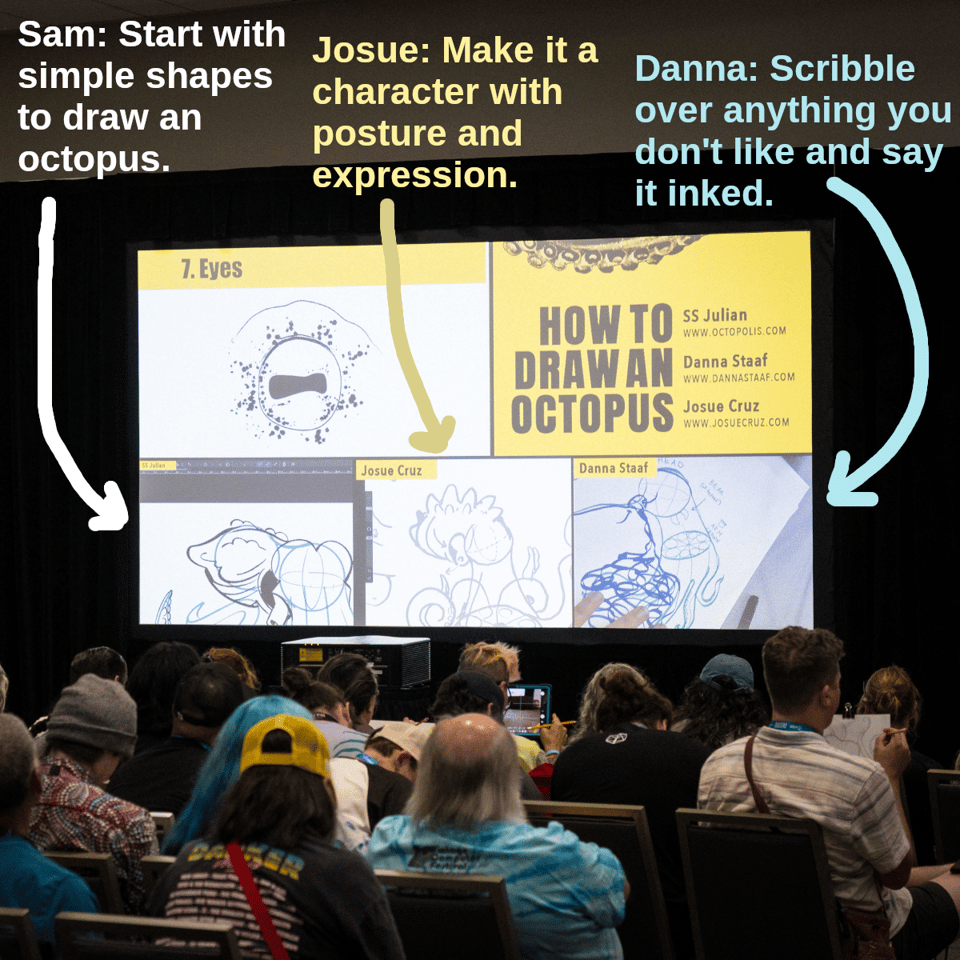
Cephalopod News
By recording detailed 3D video of the “Octopus Garden” where thousands of octopuses gather at deep-sea hot springs, scientists can now describe exactly how these animals use their arms to move. In the words of lead scientist Kakani Katija, “We learned that octopus crawl by creating a modified foot that persists throughout the behavior, a simplification that could aid roboticists.”
Octopuses are mollusks, the same group that includes snails and clams. A core feature of all mollusks is a large muscular foot—snails ooze on it, clams dig with it, and octopus ancestors developed it into a plethora of sucker-lined arms. Learning that these complex appendanges are (sometimes) used as ordinary feet . . . well, I had to tease.
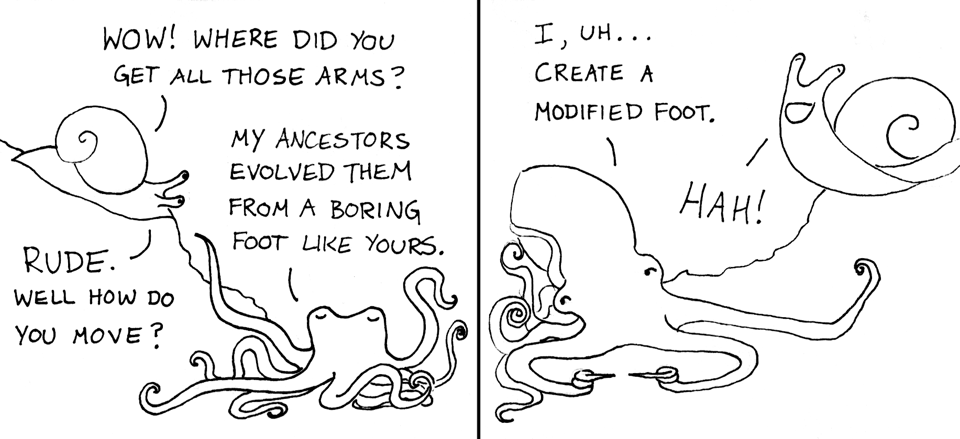
Seriously, it’s very cool research with a very cool tool. Many thanks to my friend Sam for being the first to send it my way! Using a sophisticated 3D camera to record octopuses in situ has a double benefit over studying animals in the lab: the data more accurately represent real-world behavior, and the octopuses don’t experience the stress of captivity.
Speaking of captivity, this is a fascinating article: A marine biologist and an octopus walk into a prison, leading incarcerated students in a discussion of intelligence, confinement, and connection.
Many wanted to know about the animals’ quality of life. Asking “Is she bored in there all day?” or more to the point “Is she ok?”
It’s a poignant example of the empathy toward octopuses that I’m seeing more and more.
My News
Last month, I attended San Diego Comic-Con as a professional panelist! This enormous gathering of geeks (summary and photos) offers more activities than you can shake a lightsaber at. In our one day at the con, my family caught a talk by famous cartoonists, a paint-your-own miniatures session, a live Dungeons & Dragons cooking competition, and a screening of student animated films.
And, of course:

We were scheduled for the last slot on the last day, and hoped to attract maybe 50 attendees, but, well, I’ll just quote Sam’s lovely reflections:
30 minutes before our panel began, we saw a line forming outside the room. You may not have guessed this, but the people of comic-con love to draw. And it turns out, they love octopuses, too! That line stretched all the way around the corner of the entrance, and when the last panel wrapped up, that room was filled to the brim. There were, by my estimate, over 300 people at the panel. People had to be turned away!
With the enthusiasm of the audience and the expertise of fellow panelists, it became easily one of the best hours I’ve spent on a stage. We chatted about the sea change in pop culture’s perception of octopus characters, from villains like Doc Ock to heroes like Marcellus. Then we dove into octopus anatomy, and thence to the hands-on part of the workshop.
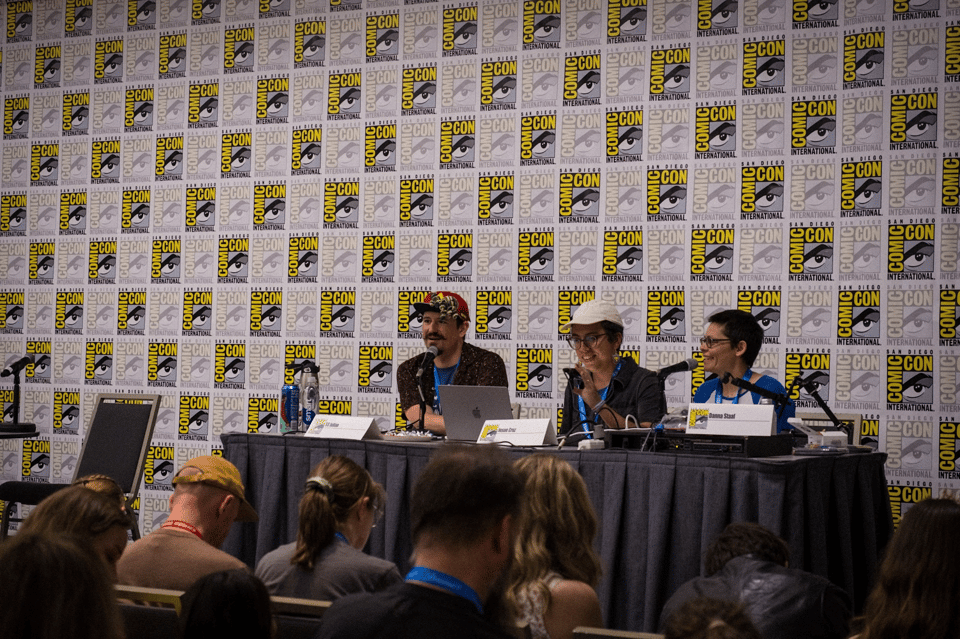
Josue (an AV whiz as well as an incredible cartoonist) had arranged our setup so the audience could watch all three of us draw at once, and attendees were given paper and pencils to follow along. We learned so much from each other and from the audience’s fantastic questions!
We’ll be able to share a full video soon, and in the meantime, here’s a delightful trailer. I’m grateful to Sam and Josue for the panel experience, to Kathryn and Sarah for documenting, and to my family for endless support.
I brought 17 copies of my OctoPunch comic (shared last October) turned into a zine, which obviously wasn’t enough. I asked my lovely husband to hand them out to only the children in the audience; we still ran out.
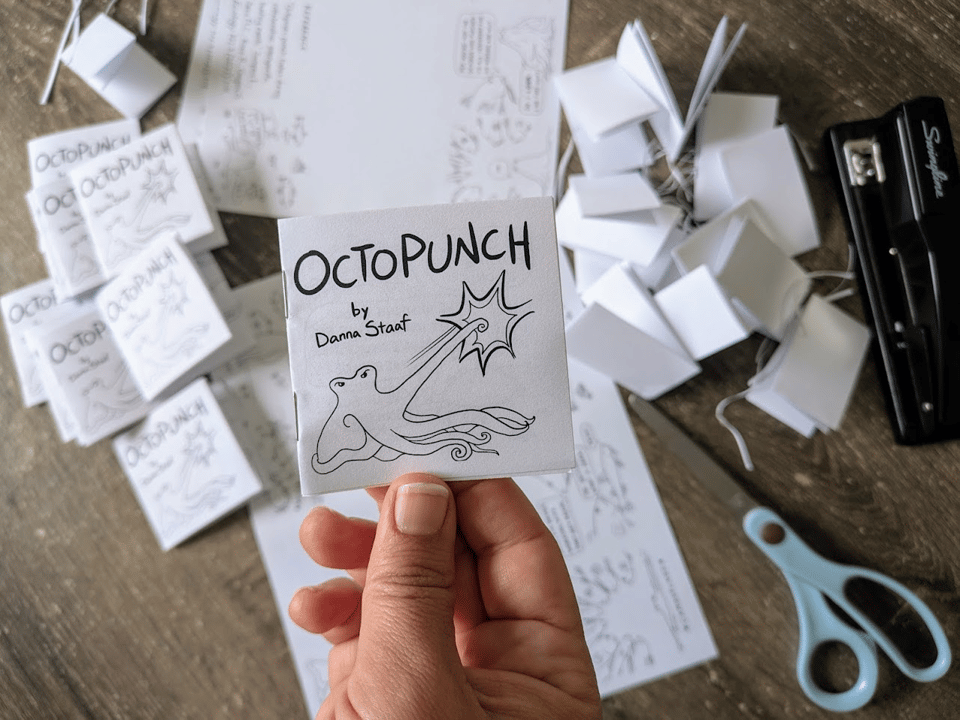
I will definitely make more for future events!
If you’re not already subscribed to the OctoPost, which provides updates on my appearances and publications as well as delivering all the cephalopod news that’s fit to ink, you can sign up here.
Funny Pages
The aforementioned lovely husband does many kinds of engineering, and our work often cross-pollinates in whimsical ways. Hence today’s comic, which I’ll explain in more detail below.
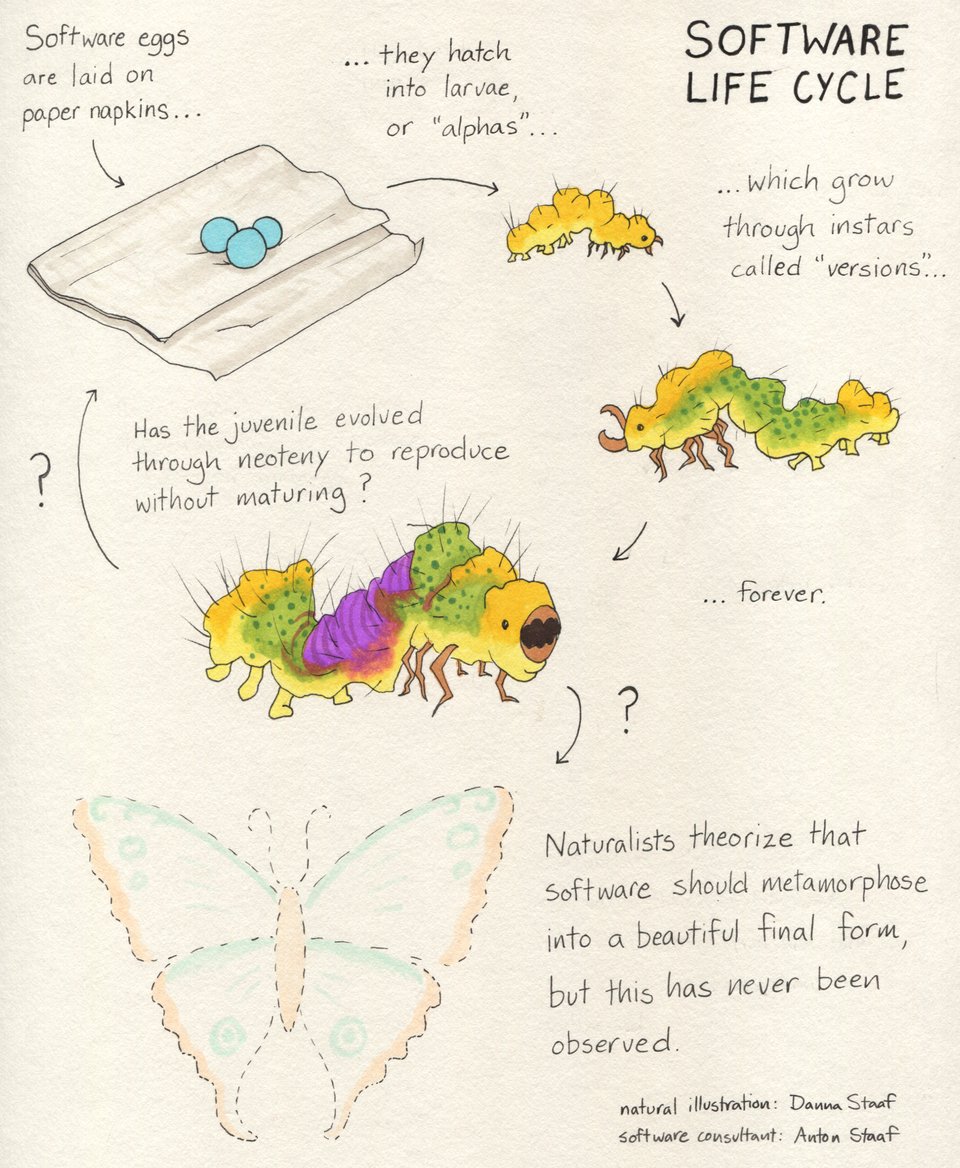
In the Silicon Valley mythos, brilliant ideas begin as scribbles on paper napkins. A first attempt at writing the software is called the “alpha version.” After it’s revised into a “beta version,” it gets tested and further revised. In theory, revision continues until the software functions exactly as intended without any bugs, at which point it is released into the wild. In practice, software gets shipped when deadlines become unignorable, and continues to be patched and updated indefinitely.
-
I would gently suggest a reframe of the correctional facility visit. While I understand the orientation toward octopuses, I think a more interesting conclusion than, “look at all the ways and places we’re finding care for octopuses,” is perhaps, “if we earnestly respect octopus intelligence to be so advanced that we do not completely comprehend it, what can we learn from the lived experiences of women (and probably non-binary people) at a corrections facility — in human captivity — that might give us insight into both how we treat octopuses in captivity and how we treat our fellow humans?” I was so moved to hear that the participants expressed concern for the octopuses who even die to escape. I wouldn’t begrudge someone with that much on their plate to not spend their time worrying about an animal they have no relationship with, and yet here they all are, people and octopus, bonded by what appears to be similar sentiments and experiences. (Note: my intention isn’t to condemn octopus captivity; I do think, however, that every idea worth acting upon deserves analysis.)
While my experiences aren’t identical, I also felt deeply for La’Darion, as I’m also a disadvantaged aspiring marine biologist who wants to study octopuses, and if your life doesn’t go exactly the right way, the goal feels impossible! I wish her the best and sincerely hope the educators follow up with her in a more meaningful way.
I’m sincerely looking forward to when your drawing panel is posted; I hope you update us when that happens!
Best wishes!
-
I enjoyed the biological viewpoint on the life cycle of a software project! But it raises the question of exactly what it means for software to "reproduce". Since versions like "alpha" and "beta" apply to software projects rather than individual bits of code, I guess that "reproduction" here isn't about code-generating code or AI programming or anything like that. Instead we might say that a fork of a software project is asexual reproduction by fission, while maybe when a new project is inspired by features from existing ones that is a sort of sexual reproduction (with a variable number of "parents"). Is that what you had in mind?
On the other hand, if an "adult" software project means one that isn't changing any more, then that makes me think of how Donald Knuth decided that the version number of the TeX typesetting software is converging towards pi, with no new features added and every bug-fix release adding another decimal digit (currently at 3.141592653), and at his death the version number will become pi and all remaining bugs will become permanent "features". So perhaps after Knuth's death we will get a glimps of the elusive "adult software"?

Add a comment: